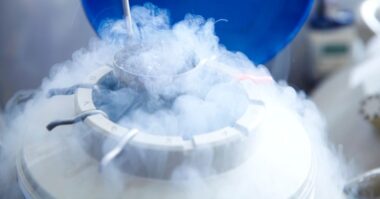The global chemical manufacturing industry generates about $5 trillion in annual revenues. Several of the world’s largest chemical producers are right here in the US. Recent reductions in energy cost, mostly relating multidirectional drilling and shale gas fracing, have caused resurgence in the US chemical industry. Many companies such as Quaker Chemical Corporation are taking full advantage. Quaker is a leading provider of process chemicals, chemical specialties, services, and technical expertise to a wide range of industries, which include steel, automotive, mining, aerospace, tube and pipe, coatings, and construction materials.
With their 2011 acquisition of G.W. Smith & Sons Inc., Quaker has become a leading provider of die casting lubricants. A 70 year established business reputation and $14 million in net annual sales, along with a wide line of complementary products made this company an ideal fit for Quaker.
Operating out of Dayton Oh, G. W. Smith produces a variety of high quality die cast lubricants and metal working fluids to its customers. The process includes high levels of precise chemical mixing. Chemicals are mixed with various temperature additives to accommodate a specific client’s recipe.
The Problem:
During an expansion in 2006, the operations systems engineering for G.W. Smith consulted with IKA Works Inc. in Wilmington NC and several other mycologist consultants to build a lubricants mixing system.
The Solution:
The mixing system is fed by a large storage tank or a reactor. The storage tank is set on load cells to ensure proper feed levels. The oil based liquid must be circulated and kept at a constant temperature of 150-165F to prevent solidification. A SEEPEX BN 10-6L Progressive Cavity Pump is installed at the base of the tank to mix the liquid and add surfactants as needed. If the base chemical is not heated the solution will turn into a wax consistency. The load cells communicate with the skid, which mixes the base lubricant.
The mixing skid uses two SEEPEX BN 5-6L Progressive Cavity Pumps and a high sheer mill to mix oil, surfactants and water to a yogurt type of viscosity. After a chemical reaction the material goes through another high sheer process which changes the emulsion into a paste. Then paste is then mixed with other additives and transferred to a homogenizer. Here it is mixed again and is then pumped to tanks for storage. This is the base and can be altered further for customer needs.
A hugely beneficial part of the G.W. Smith offerings is that the end solution of the lubricant can be customized to the process that the customer requires. For this, the company has a full time chemist as part of their staff.
When a final mixture has been developed, it is pumped to a filling system that packages the chemical for delivery to G.W. smith’s customers. The reliability of the lubricants consistency has set this company apart. Clients include GM, Duromax, and general foundries.
The Benefit:
G.W. Smith works closely with Buckeye Pumps, a SEEPEX Distributor and Certified Service Center in Ohio. “Dustin (Renner) is always a phone call away. Their reliable service is definitely an added bonus to owning a SEEPEX pump,” says David Brown about the support he gets from Buckeye Pumps.
SEEPEX is expanding its service reach within the US. All Distributors are well trained in the product lines and will support the SEEPEX clients with needed services. The pump provider now also has three official service centers around the country which are Cortech Engineering in California and Tencarva Machinery in Tennessee and Quadna in Colorado.
Certified service centers are SEEPEX backed and can provide SEEPEX warranty backed services. The work is guaranteed to cost less than 75% of the price of a new pump.
SEEPEX is deeply involved in the chemical industry. Although many processes seem obvious fits for a progressive cavity pump, others are a bit less common.
Various ranges of PC pumps can gently meter and convey fluids of any viscosity, in a wide range of temperatures (especially with even wall stators), with or without solids. In a progressive cavity pump, a single helix rotor turns insides a double helix stator to create cavities which progress from the suction to discharge to create flow. The compression fit between the rotor and the stator creates seal lines that keep the cavities separate as they move through the pump with each rotation. The compression enables the pump to act like a valve. The result is flow with very little pulsation and low shear rates. Slip is less of an issue and when the pump stops, nothing will flow through it. The compression between the rotor and stator enables customers to mount the pumps vertically. Non suspended solids in slurries won’t settle in the pump casing and cause wear issues when pumps are mounted vertically. The pump works with gravity by allowing settled solids to drop into the cavity.
Typical applications where PC pumps can replace centrifugal and control valve combinations include wastewater treatment, chemical metering applications, and any application in which flow control is a variable. For example, an application transferring slurry to a blending tank would typically prompt the need for a centrifugal pump and a control valve to control flow. When considering process controls, a progressive cavity pump, flow meter, and Variable Frequency Drive is much simpler than a centrifugal/valve combination. A PC pump self primes and is actually a pump and control valve in one and provides much better flow control.






Comments